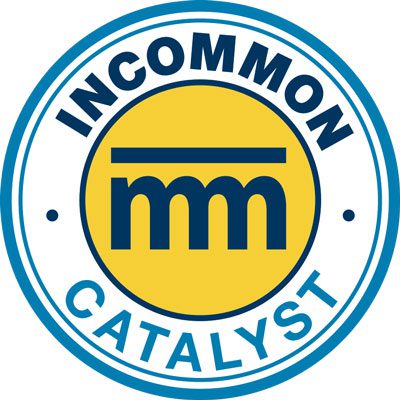Edited by Apryl Motley, CAE – Communications & Technical Writing Consultant
Estimated reading time: 9 minutes
As part of our ongoing commitment to providing you with additional opportunities to benefit from the insights and expertise of InCommon Catalysts, we are continuing their quarterly Q&A column, Catalyst to Catalyst, which we feature in our e-newsletter InCommon News.
Think of Catalyst to Catalyst as a quarterly, virtual advice panel providing perspectives on key identity and access management (IAM) topics for the InCommon community. In this installment, catalysts discuss how IAM can support institutions in complying with regulatory and reporting requirements as well as best practices for establishing relationships with vendors. This is our first column for 2025.

Response: Even though the primary purpose of IAM is
different, it has a vast potential for supporting many use cases related to security compliance,
regulations, and reporting. That’s because an IAM solution usually has access to a large amount of
identity-related data and can process it in various ways. You can use this to your advantage and generate
reports required by compliance policies or prepare information for auditors.
However,
regulations are not only about reporting. You also need to certify certain properties of your systems and
meet some security requirements, such as segregation of duties. A proper IAM solution can handle these
requirements with ease. You can define automated processing rules and policies that guarantee the desired
state and prevent actions that would violate the requirements, regulations, and security policies.
Conversely, you may want to relax the conditions under certain circumstances and allow actions that would
normally be in conflict with the policies to take place. Any time such an exception occurs, though, you want
to have the situation strictly under control, be informed about it, and have a human-driven resolution
process in place. An IAM solution can help you make all this easier.
Despite all its
advantages, an IAM solution won’t solve everything and make you compliant by itself. It provides the tools
to make the process easier for you, but you need to actively work on making your organization compliant in
all its aspects, both inside and out of the IAM realm. There are tasks that you can’t offload to IAM. For
example, you need to have proper processes in place, your employees may need to go through relevant
training, or your documentation needs to be properly maintained. It’s a lot of work, but a well-deployed IAM
solution can take a significant portion of that burden off your shoulders.
It is important
to note that to realize the full potential of an IAM solution, you need to provide it with all the
identity-related data you handle. For instance, if you still manage access to a few resources outside the
IAM solution or even have some systems that aren’t connected to it at all, the reports and compliance checks
will never be complete. Such a situation significantly hinders the usefulness of IAM. Therefore, don’t wait,
take action now, and ensure your IAM solution has all the data it needs to help you get and stay compliant
with all relevant regulatory, reporting, and security policies.

– Slavek Licehammer, Head of Engineering, Evolveum; academia@evolveum.com
Response:
To say that we’re in a time of uncertainty in higher education would be the understatement of the year,
maybe the decade. We have federal regulations that change day-to-day that may also conflict with the
state-level regulations that govern our institutions, and even different state-level regulations for some
institutions that cross state lines, and all of that before we get into international regulation like
General Data Protection Regulation (GDPR) from the European Union. Institutions must be agile in their
ability to respond to these changes, and robust IAM systems can go a long way toward enabling that
agility.
Especially for organizations that haven’t adopted data warehousing for reporting, the
IAM system will often be the one centralized repository of bio/demo data, which otherwise would be coming
from any number of disparate authoritative systems. Beyond holding data that might be required for
compliance or reporting purposes, a robust IAM system will provide an institution with tools to control who
can access that required information, wherever it’s located within institutional systems. As the data
necessary for a compliance or reporting need changes, well-designed entitlement and role-based access
control (RBAC) systems allow for the granting or removal of access in a clean, manageable
way.
IAM systems also help institutions protect the privacy of personal data to comply with
regulations like Family Educational Rights and Privacy Act (FERPA) or GDPR. When all the systems in an
institution are sourcing their identity data from a centralized system, it’s easy to enforce controls on
what data a system receives about any given individual, depending on the actual business need of that
system. For example, enterprise resource planning (ERP) systems can receive full data including the legal
name of a student since that data is required for its functionality. The learning management system, on the
other hand, doesn’t really need the student’s legal name, but for functionality like rostering and
attendance, it will need the student’s name. Finally, if students have opted to restrict access to their
information under FERPA, the institutional people directory wouldn’t receive any data about the students. As
with enabling access to data, well-designed IAM systems (including business processes, technical processes,
and technology systems) make it easier to protect the data of an institution’s
constituents.
Finally, IAM systems can help to ensure complete purging of data that, through
changes in regulation, might become more of a liability to maintain than the value provided to the
institution by having it. Since the IAM system is already controlling access to identity data, the pool of
systems that must be purged is minimized, and with systems sourcing their data from the IAM system,
overwriting or removing the data in the IAM system will generally ensure that it is overwritten or removed
in any downstream system as well.
While none of us can be sure what new challenges tomorrow will bring,
we can all do our best to make sure we’re prepared to meet those challenges when they
arrive.

– Kenny Barnt, Senior Consultant, Moran Technology; kenny.barnt@morantechnology.com
Response: Institutions should fully understand their
desired relationship with vendors, especially with professional service vendors, to ensure long-term
success. For example, some vendors focus on training and knowledge transfer to make university resources
self-sufficient, which may not suit institutions looking for staff augmentation
post-project.
When working with software vendors, be prepared with the use cases you want to
discuss and ask for them to be demonstrated if possible. Some software vendors will give you a trial/lab
that you can use for several weeks to do a proof-of-concept. It’s important to have your requirements for
infrastructure in advance, particularly with SaaS vendors. You typically will only get two environments
(non-production and production), and typically your non-production will have user limits. These can be
inhibitive for some institutions when it comes to load testing or end-to-end testing.
Lastly, be
sure to talk to references. Not a lot of software vendors understand the unique landscape and challenges
within higher education and research. The same thing can go for professional services vendors as well. There
are a lot of institutions that have had great experiences with software and services vendors; be sure you
are one of them.

– Paul Hodgdon, CEO, Instrumental Identity; paul@instrumentalid.com
Response:
Sometimes engaging external vendors is the best option for colleges and universities to address complex
challenges and enhance institutional operations. Institutions look for partnerships that enhance their
operations, create efficiencies, and free up time for their teams to focus on other high-priority items. As
someone who has both hired vendors and been the hired vendor, I recommend following these best practices
when selecting, managing, and maximizing vendor relationships.
First, when selecting a vendor, do
your due diligence to make sure they align with your institution’s needs. Talk with peers who will provide
honest and valuable insights into vendor performance and reliability. Another good way to assess a
prospective vendor’s expertise is by reviewing publications, speaking engagements, and case studies released
by the vendor (or by individuals on behalf of the vendor). Additionally, check that a vendor’s proposal
reflects your specific goals rather than offering a generic, one-size-fits-all approach.
Meeting
the team with which you’ll be working is equally important—interview potential vendors to confirm that the
assigned consultants fit the institution’s culture and needs. (Pro tip: Ask if the team presenting the
proposal will be the same team that works on your project.)
Once you select a vendor, set clear
expectations to foster a productive relationship. Define project outcomes up front by voicing your desired
results rather than dictating specific methodologies or approaches. Then, make sure to clarify roles and
responsibilities of both members of the vendor team and those on your internal team who will interface with
the vendor. Agree on deliverables, success metrics, and communication frequency—and be
specific.
Maintaining active engagement through regular meetings will help keep both parties
aligned on timelines, budgets, and institutional needs, and you’ll find it easier to hold everyone involved
on the project accountable. If you determine expectations are not being met, promptly address concerns by
scheduling discussions with the vendor to find solutions, preventing minor challenges from becoming major
disruptions.
I’ve been involved in countless positive vendor engagements on both sides of the
partnership. I’ve found the ones that are most successful follow these best practices and often yield
unforeseen benefits that go beyond the project scope.

– Jacqueline Pitter, CISSP, former Senior Strategic Consultant, Vantage Technology Consulting Group
